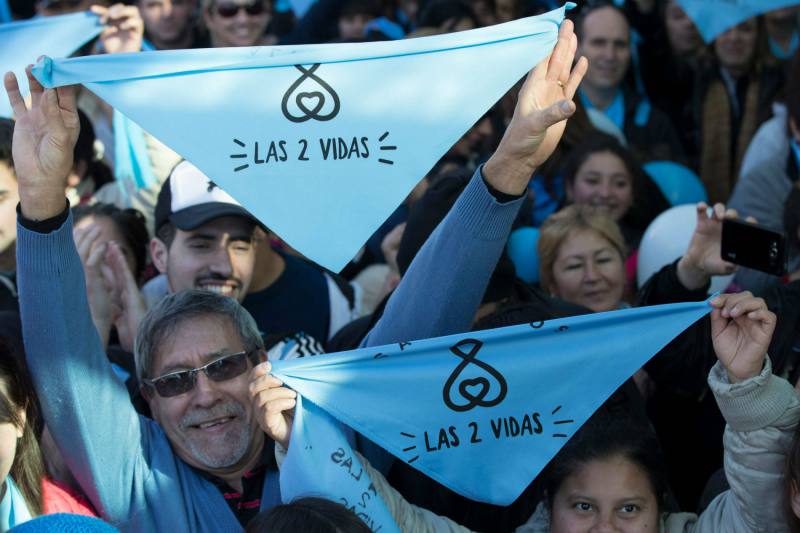The debate for the legalization of abortion in Argentina did not produce a law -the bill was rejected by the Senate in August after long months of public discussion-, but it did produce a new form of social activism: the colored handkerchiefs. The campaign for legal, safe and free abortion won the streets on the necks, wrists and backpacks of thousands of women, back in March, when everything was just beginning. The expanding tide generated its adversary: the light blue handkerchief of "let's save both lives".. Between slogans and colors, the media talked about the feminist green wave and the submerged light blue wave.
This dynamic of activism, both folkloric and efficient, builds a series of masks that hide the unique and unrepeatable face of each person, with its history, its emotions, its postures and its nuances. And when the handkerchiefs become "bandannatization" walls are built and bridges are destroyed: the binary logic of the political-legislative debate hijacks the complexity of everyday life and pigeonholes it into a simplistic for/against that becomes exclusionary.
People usually predisposed to recognize the good intentions of others, to listen in order to understand motives and to dialogue in order to find better solutions, are trapped in the bichromatic reduction, almost always fed by the most extreme all-or-nothing positions.
Cross disqualification is always at hand and coexistence cracks: friendships are strained, family atmospheres are broken. The temptation of the cultural war unfolds all its charm and the calls for the culture of encounter sound like distant bells, typical of an ideal or fictitious world, inhabited by naive or lukewarm people. The logic of the handkerchiefs ignites militancy, but entails the risk of dehumanizing the militant: turning him into an enemy and hiding his face, his doubts, his intentions, his need for help.
Cross disqualification is always at hand and coexistence cracks: friendships are strained, family atmospheres are broken. The temptation of the cultural war unfolds all its charm and the calls for the culture of encounter sound like distant bells, typical of an ideal or fictitious world, inhabited by naive or lukewarm people. The logic of the handkerchiefs ignites militancy, but entails the risk of dehumanizing the militant: turning him into an enemy and hiding his face, his doubts, his intentions, his need for help.
I recently heard that dialogue is like a table: it unites us as well as separates us. We are together, but each in his or her own place. There is a common, shared place of openness. The scarfing forces to monologue, it is insular and self-referential. It works for the politics of the rift, but not for the transcendence of the Gospel, which invites to a path of communicative solidarity: it does not aspire to win but to convince and inspire, and proposes to argue without defeating. It imagines a world of a thousand faces, in which colored scarves are anecdotal accessories.
Professor of Sociology of Communication. Austral University (Buenos Aires)











